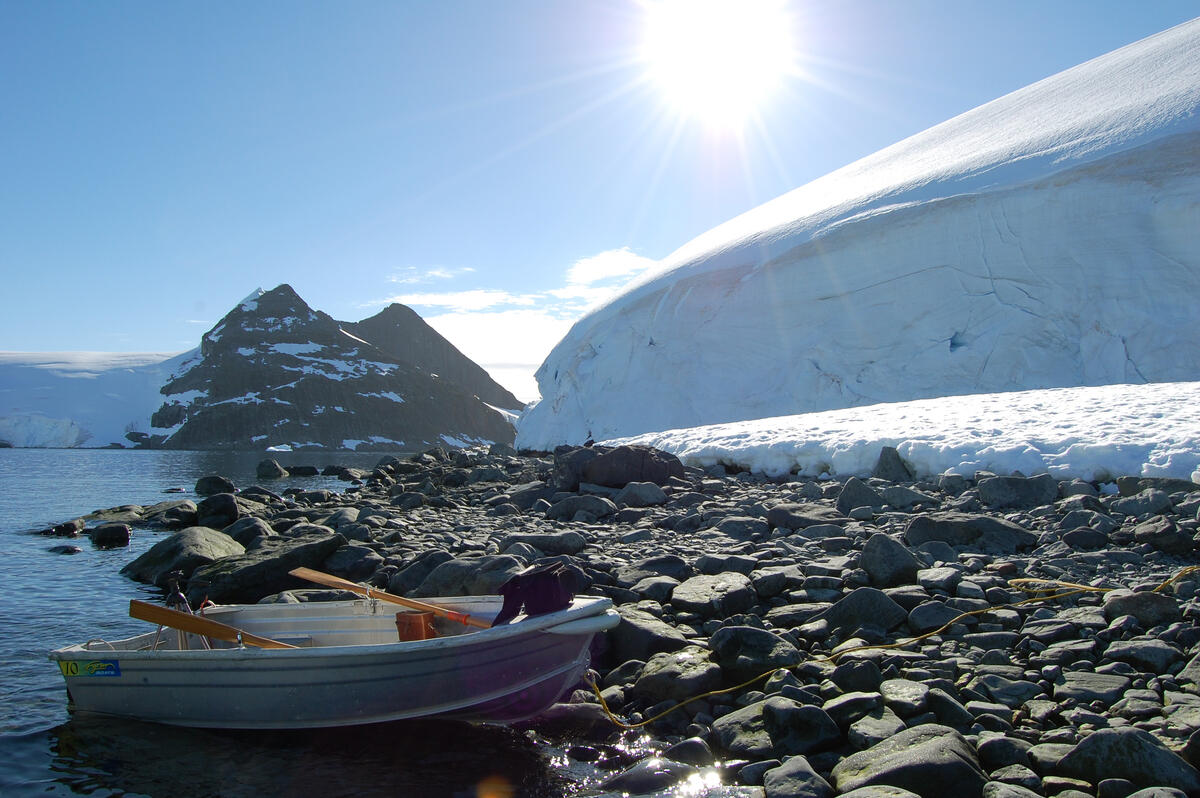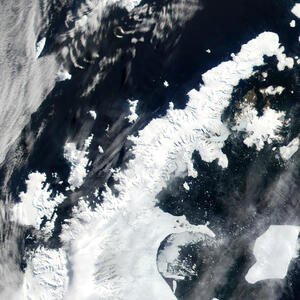
We headed directly south from Deception Island toward the Antarctic Peninsula coast some 50 miles away. This was to be our first introduction to Antarctica “proper”, although many of the stops we would make were at islands just off the continent coast. The Peninsula, and indeed much of the rest of the mainland, is in fact a large archipelago, a series of mountain peaks which are joined only by the massive ice-cap which straddle them. For a visiting cruising yacht, it turns out that anchoring on the side of steep mountain sides is not much of a proposition. Most of the places where it is possible to stop over are at smaller islands to which the main ice-cap does not extend. For this reason, it would be some time before we actually set foot on the continent itself.
We initially had problems at the first two locations at which we tried to moor. A combination of hopeless anchorages and inclement weather worked against us, forcing us to sail overnight to a third location.
To the Antarctic Peninsula
We first made landfall at Trinity Island, and attempted to find a secure mooring in a small bay in the center of this picture. The increased savageness of the terrain was shocking – we began to consider the South Shetlands as moderate in comparison.
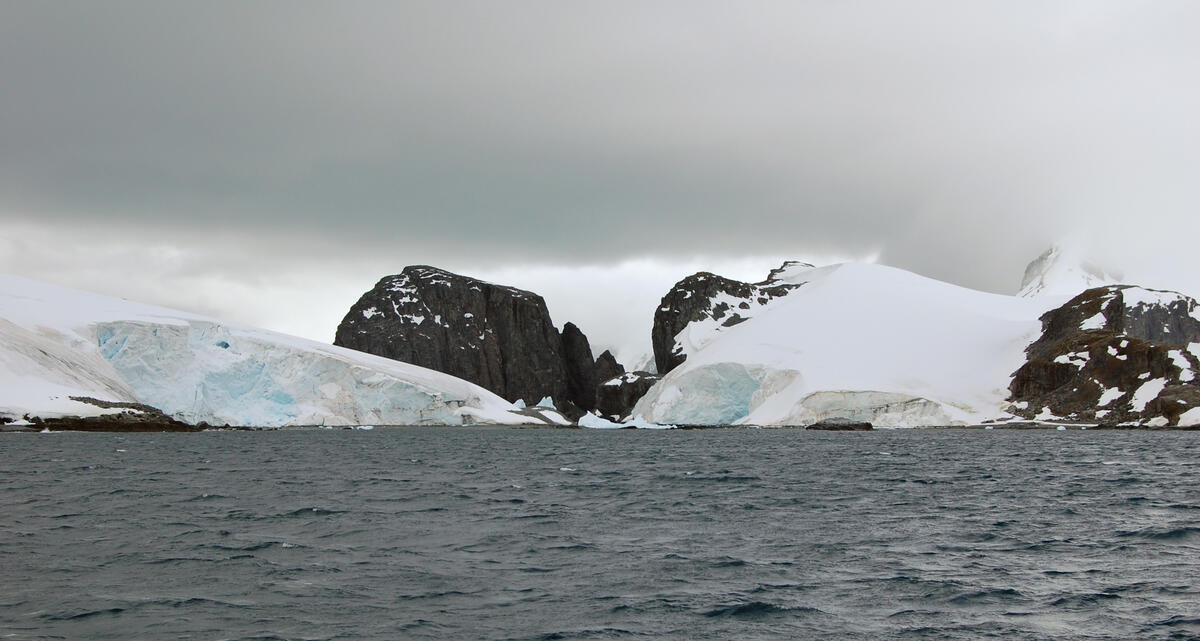
We gave up on this first port-of-call, as we simply could not obtain secure anchorage. The bottom was nothing but rock. A few hours away was another supposed mooring point, this time on the mainland itself. We headed that way.
The air temperature is in fact not that cold, about 5°C. However the wind pushes the effective temperature way down, and it becomes desirable to cover as much skin as possible. The light-tint anti-fog ski goggles were invaluable.
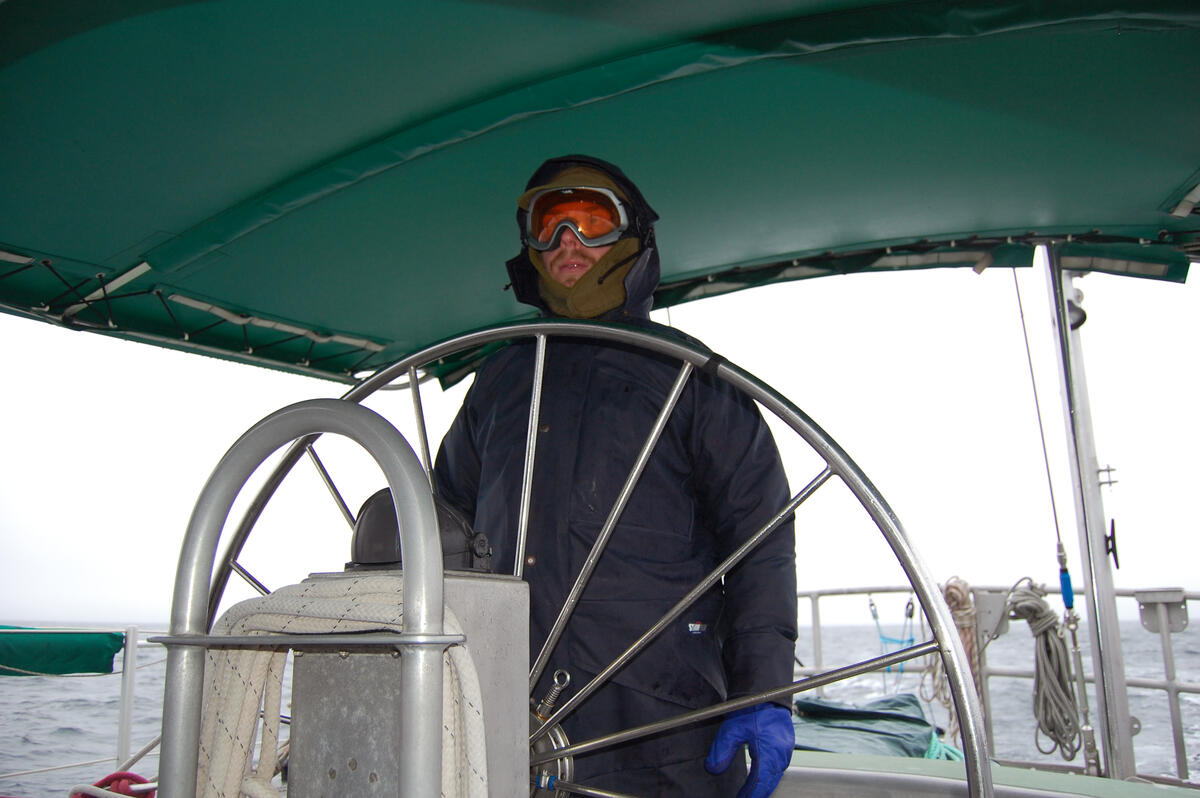
Unfortunately the second option of Cape Herschel turned out to be an even worse proposition than Trinity Island. There was so much surge running in the proposed mooring spot that getting the necessary lines ashore proved to be extremely difficult, and ultimately too dangerous to persist with. We have no photos of this area, as we were too busy running around amongst the falling snow working with lines and dinghies. Already late at night, we put out to sea, planning to drift slowly overnight the 20 miles or so to the next location – third time lucky! Antarctica was not making things easy on us.
Overnight, the weather cleared a little. The below picture is a 0.3s exposure taken at about 1 A.M., and it shows the first view of the continent that was presented to us.
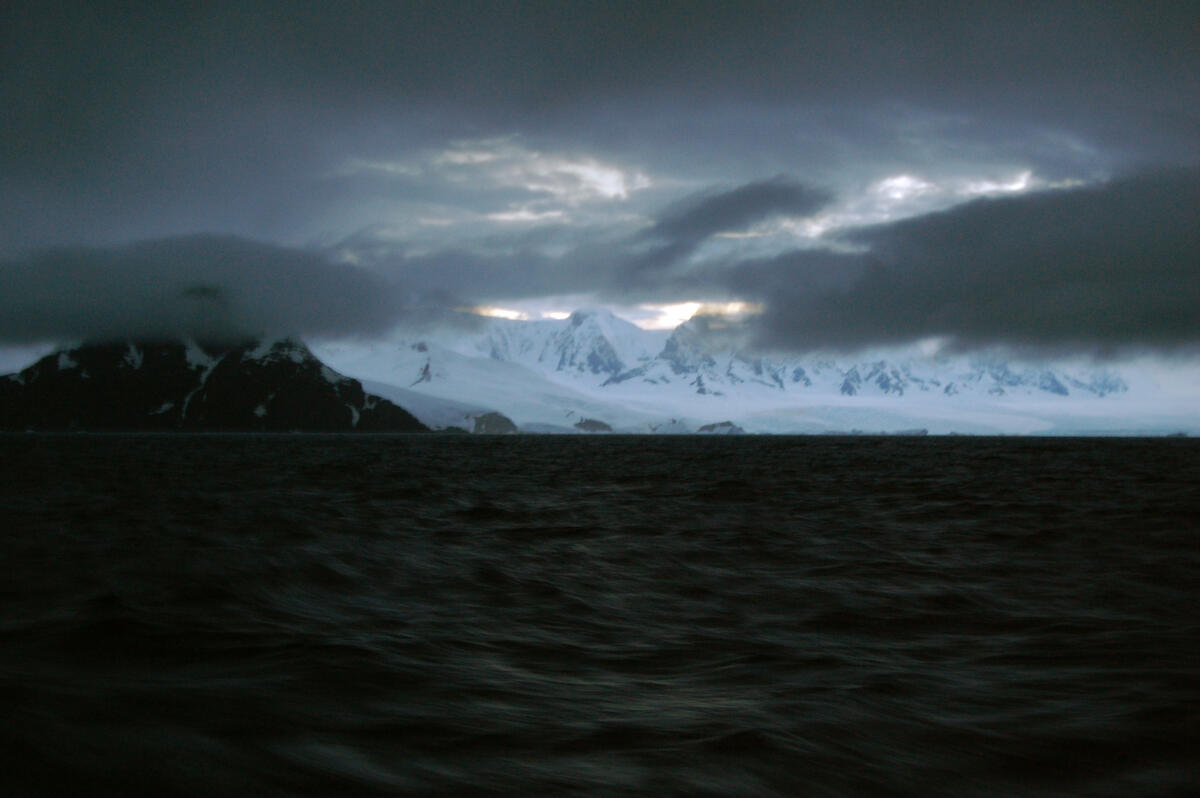
As we arrived at our third option the next morning, the weather had changed completely, and it seemed that Antarctica had decided we had been sufficiently trialed. Our destination is around the island at the left in the picture below. The coastline in the background is some 15 miles away, and the continental ice-cap can be clearly seen. While the underlying terrain is jagged and mountainous, the ice-cap forms a white plateau high above sea-level.
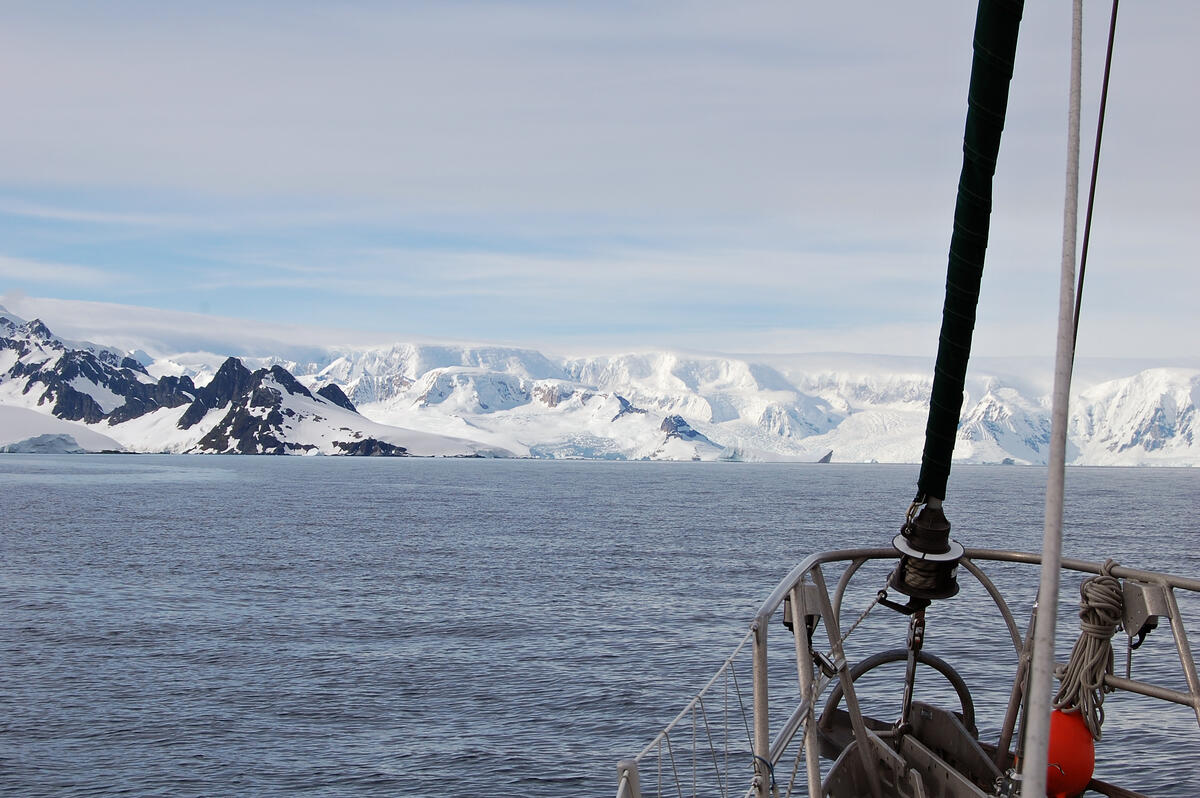
Ice is now the predominant feature of the land…
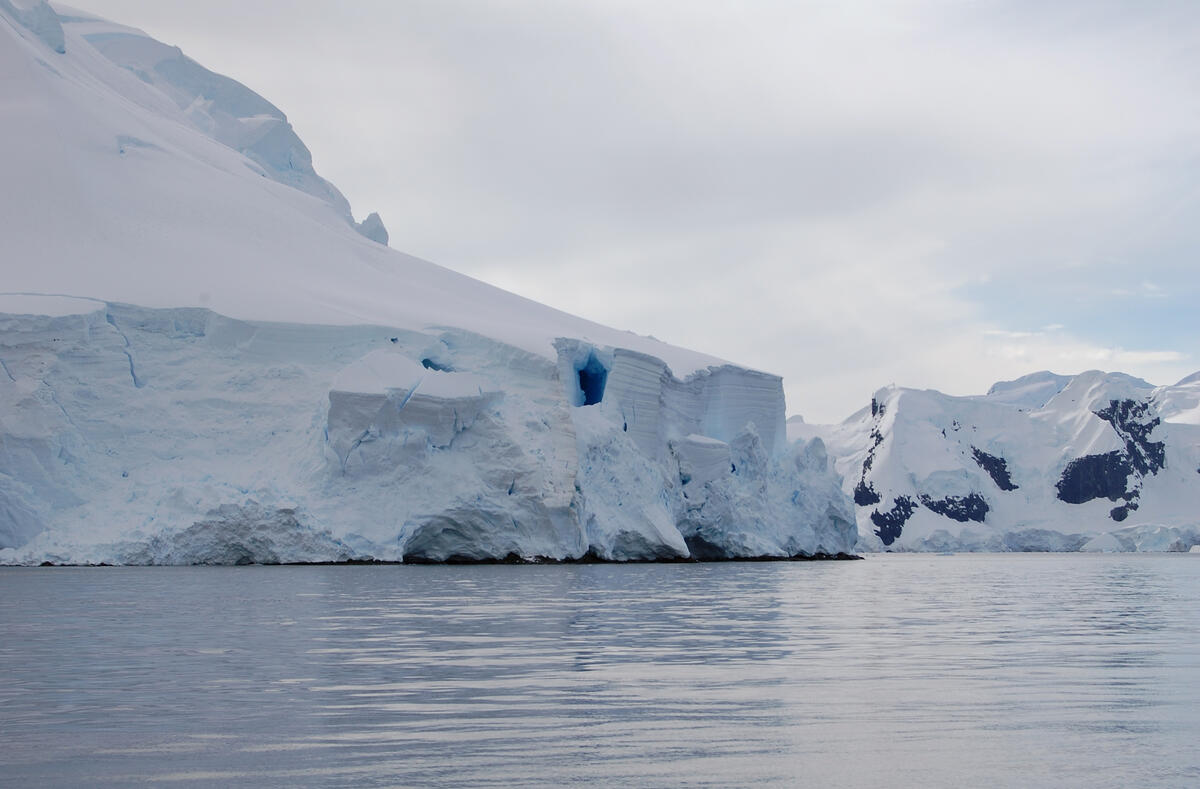
…and icebergs are the norm in the water.
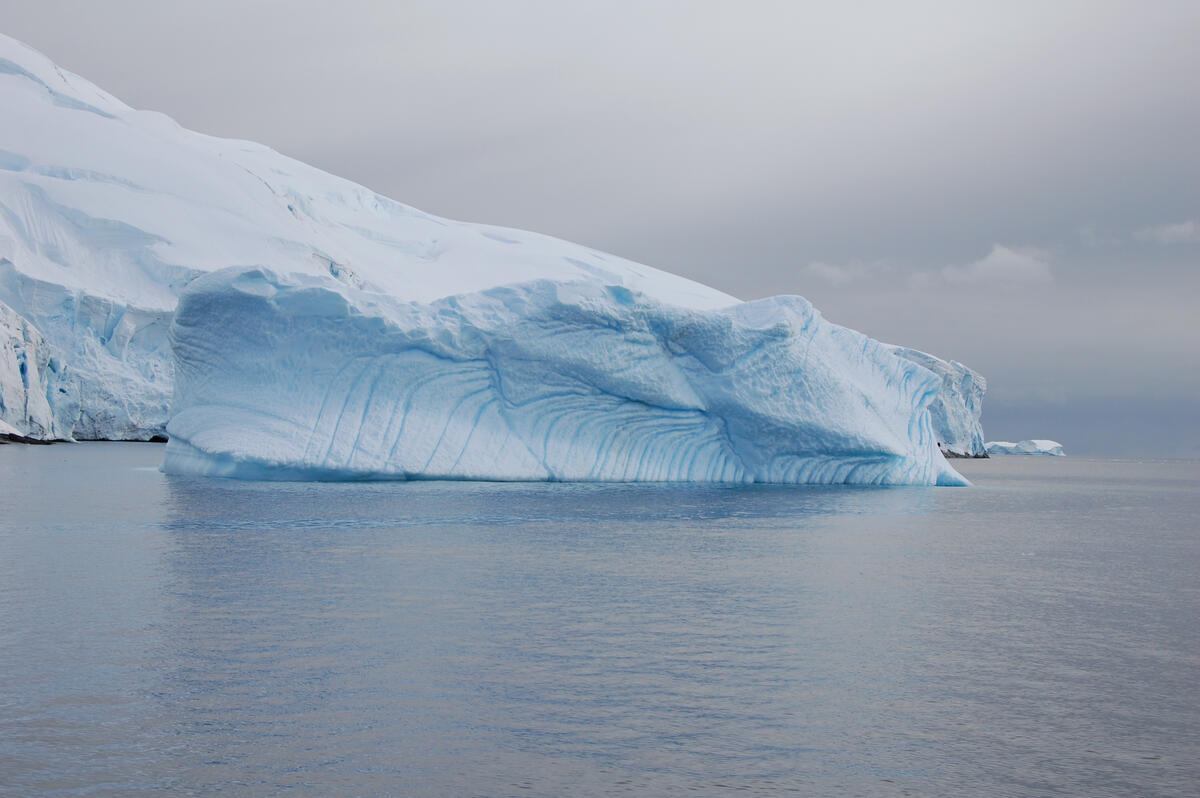
Icebergs provide constant visual interest.
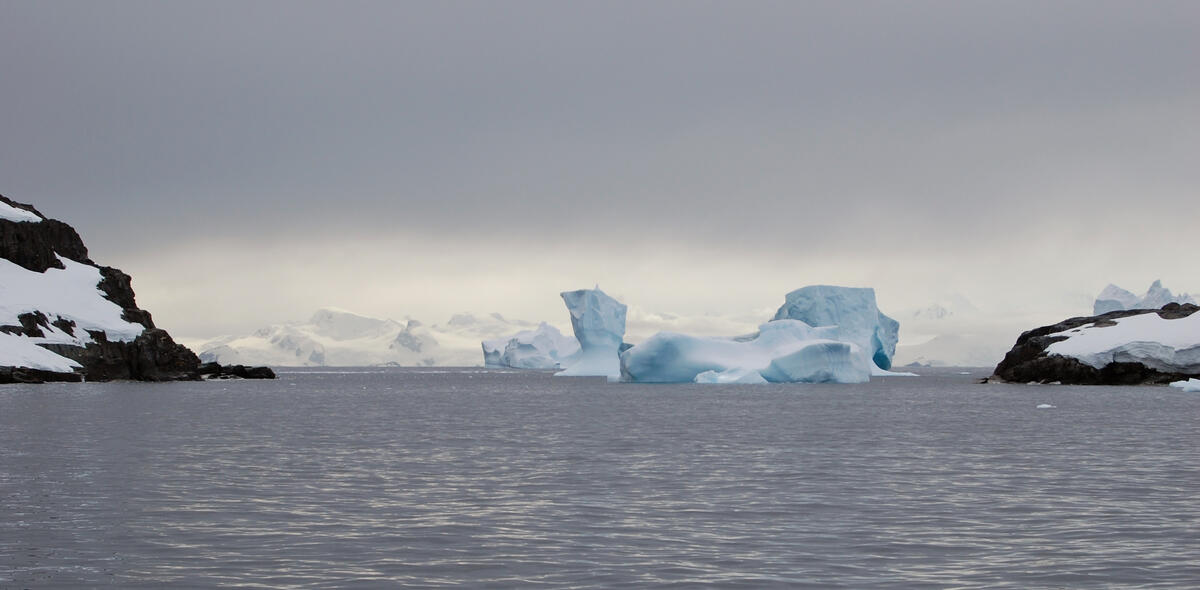
Arrived safely at Murray Harbour, nestled between Bluff and Challenger Islands, we needed to get lines ashore. Mooring in these locations is only accomplished with the assistance of shore-lines – the water is too deep and the sea-bed too rocky for anchoring to be adequate alone. Here, Peter has sent Paul ashore with lines in the dinghy, which will be attached to rocks then rowed back out to the boat. Meanwhile, we will anchor in the correct location then reverse the boat in toward the shore and meet up with Paul.
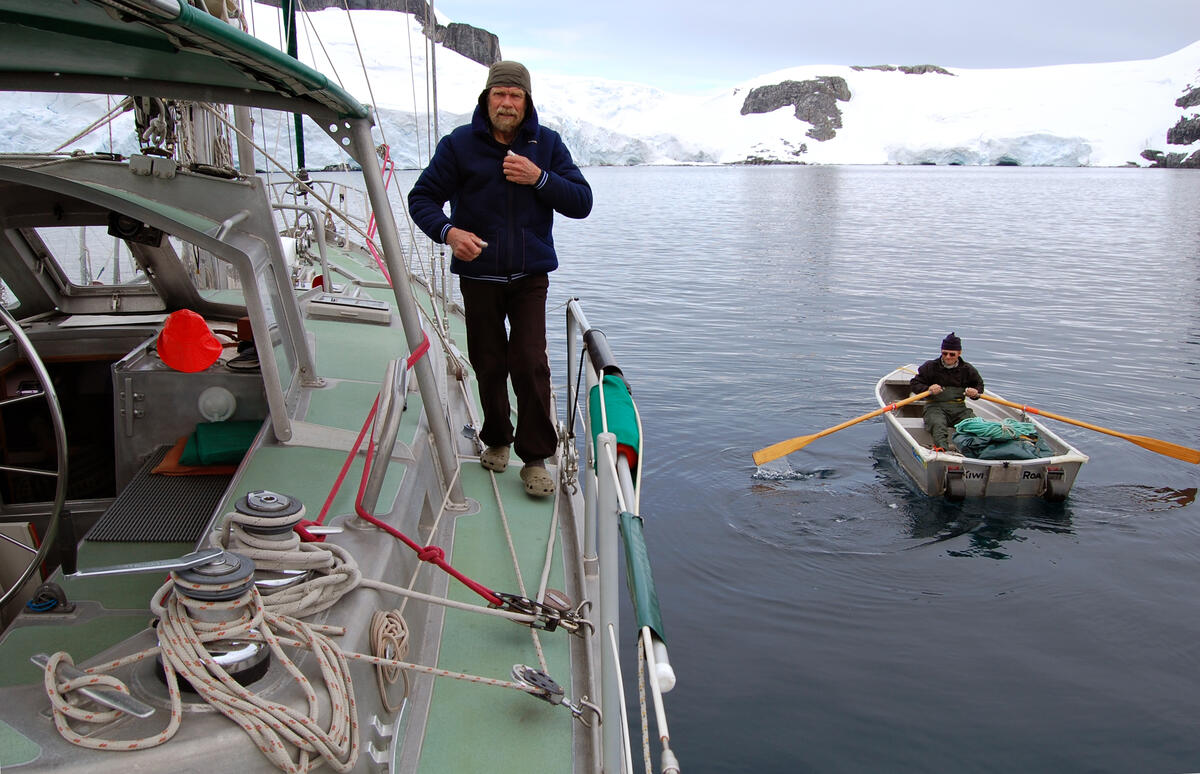
When the anchor is set as well as possible, and the lines are securely attached, some chain is brought up until all three mooring points are in tension and the boat in a stable position. This also places a positive uni-directional pull on the anchor, meaning it is less likely to let go of the grip that it does have on the sea-bed.
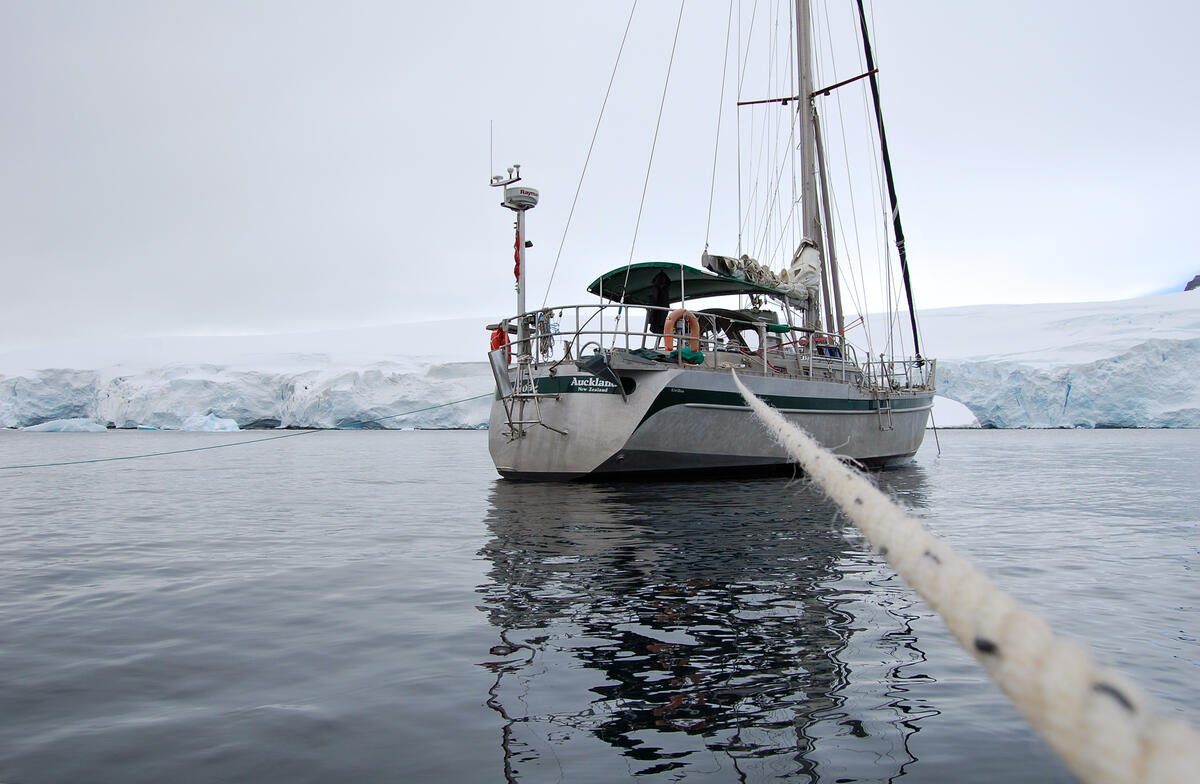
We were moored next to Neve, a little French boat with a pile of guys aboard looking for adventure.
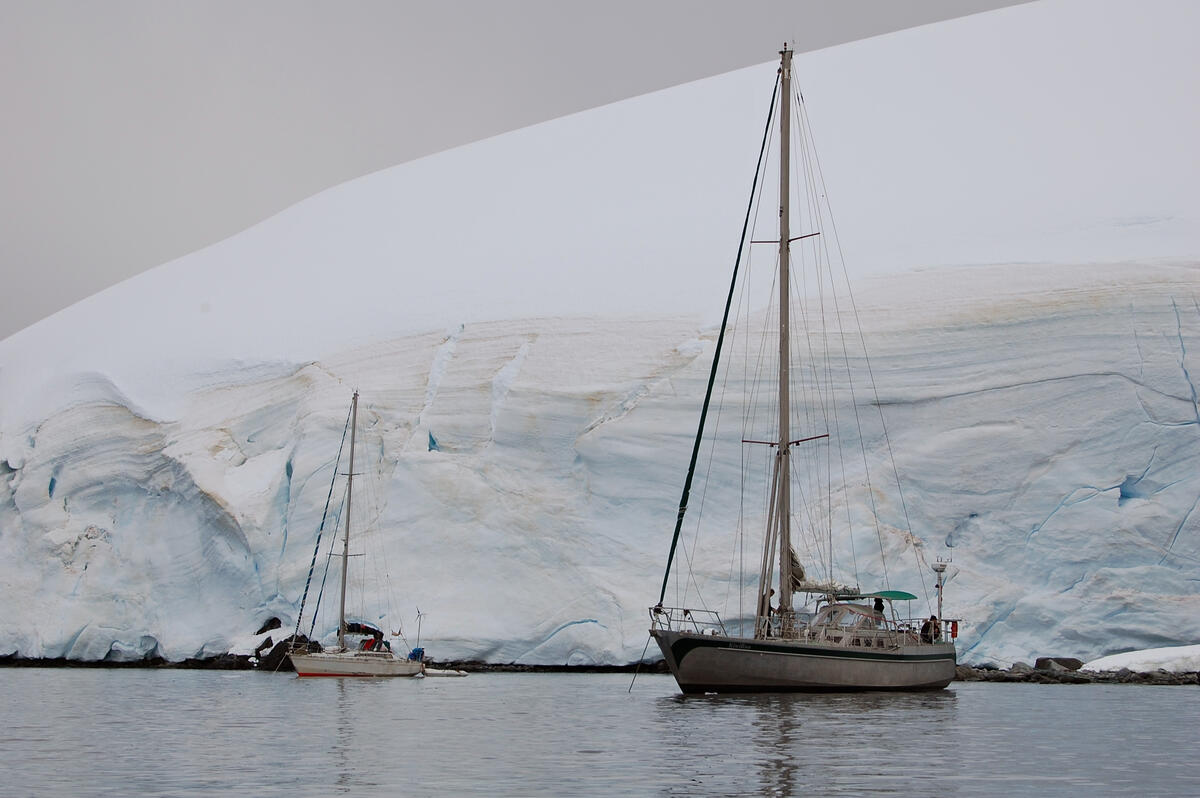
Behind the boat, the ice build-up on Challenger Island towered over us. Our mooring lines were tied to the little moraine islet, which saved us from having to venture directly underneath all that ice. The little red dot at the left is our anchor buoy, tied to a retrieval line attached to the correct point on our Rocna anchor. Fouling the anchor on rock is likely in this area.
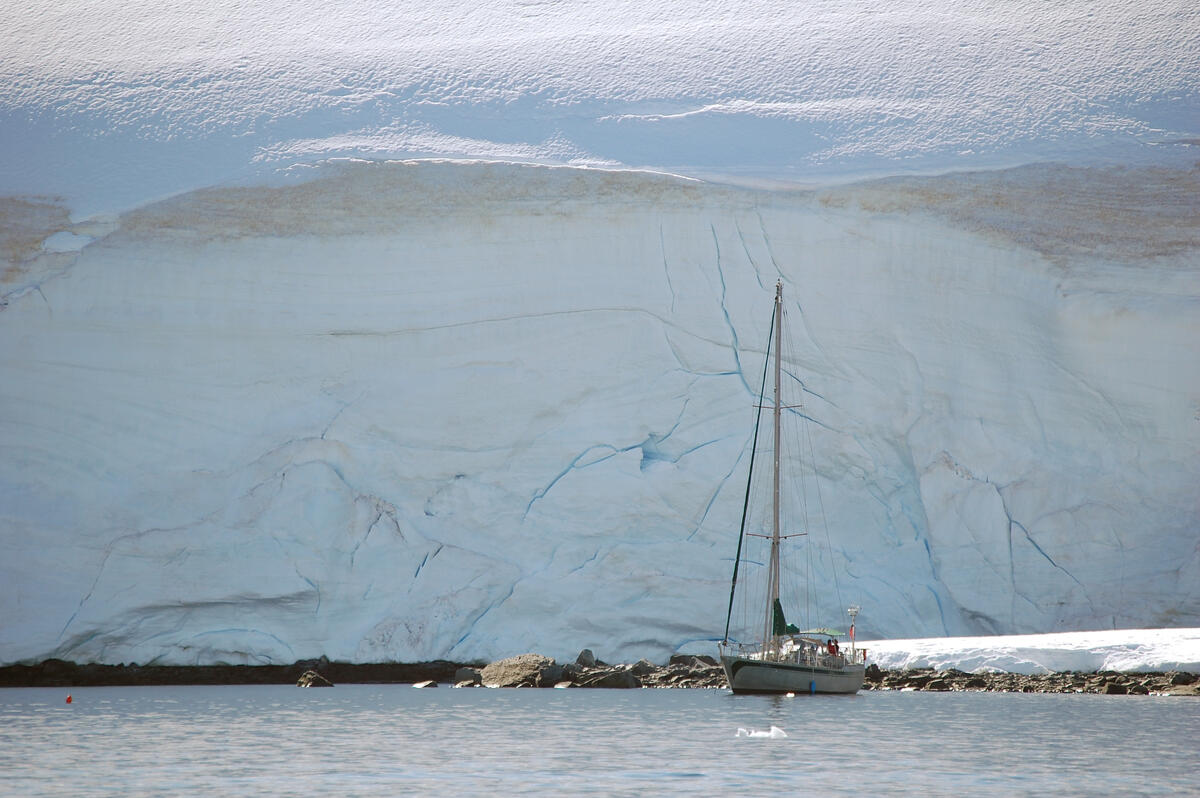
The weather the day after we arrived was truly fine.
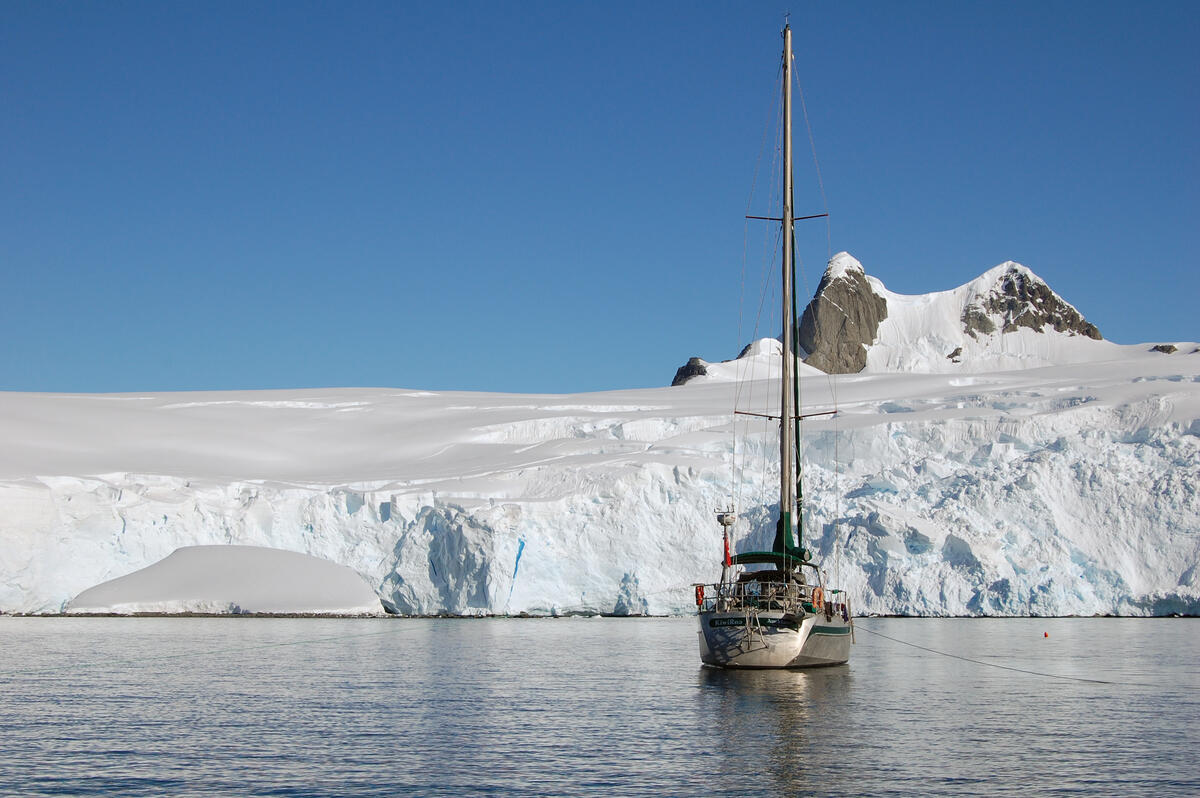
Ashore on the Challenger Island moraine, this little cutie was waiting to have her photo taken.
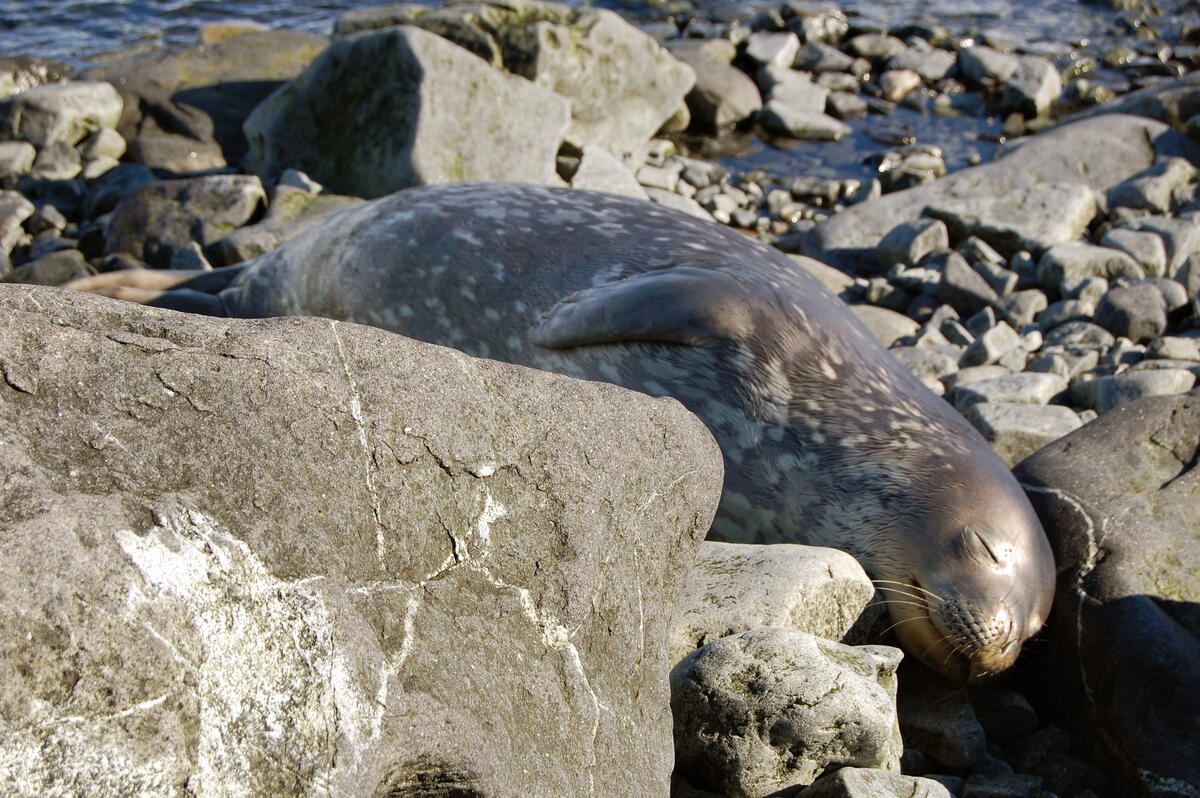
This young weddell seal crawled out of the water and only made it a meter or so before deciding that she had gone far enough for her sun-bathing requirements. She wasn’t in the least bit bothered by her strange visitors.
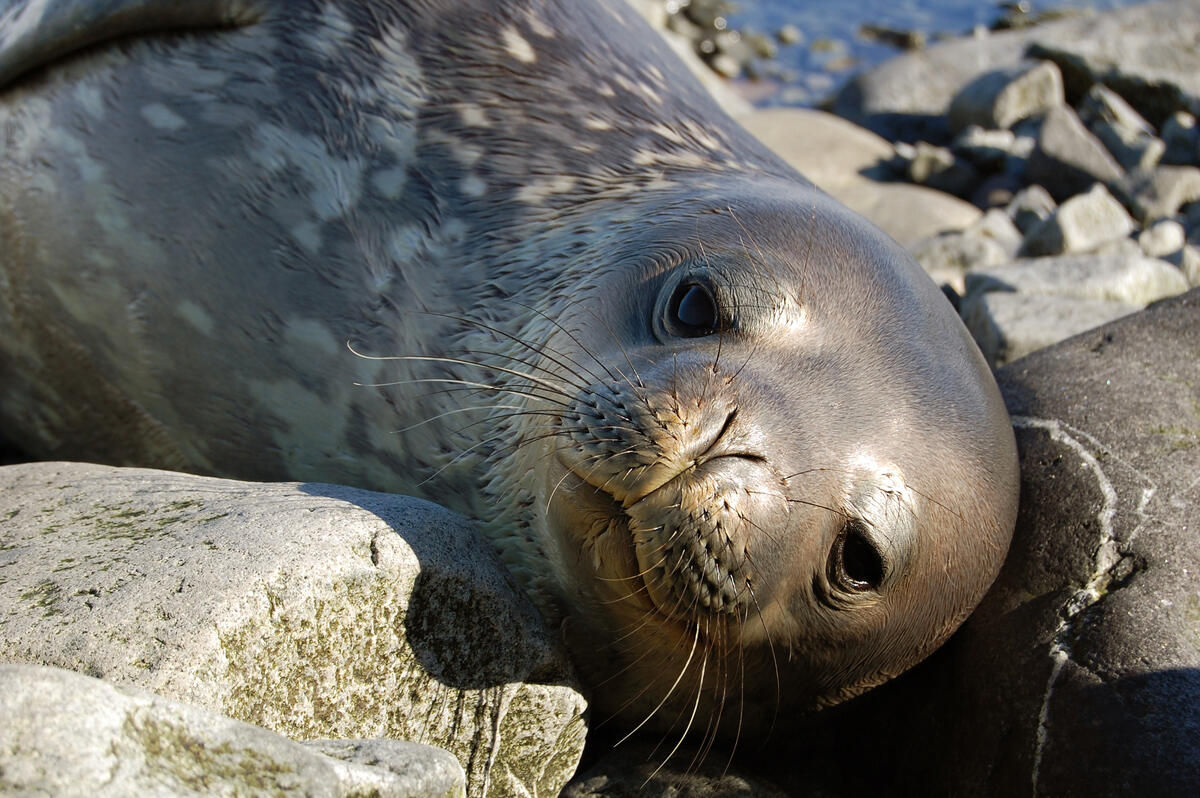
Farther away from the water, her ugly relative was resting.
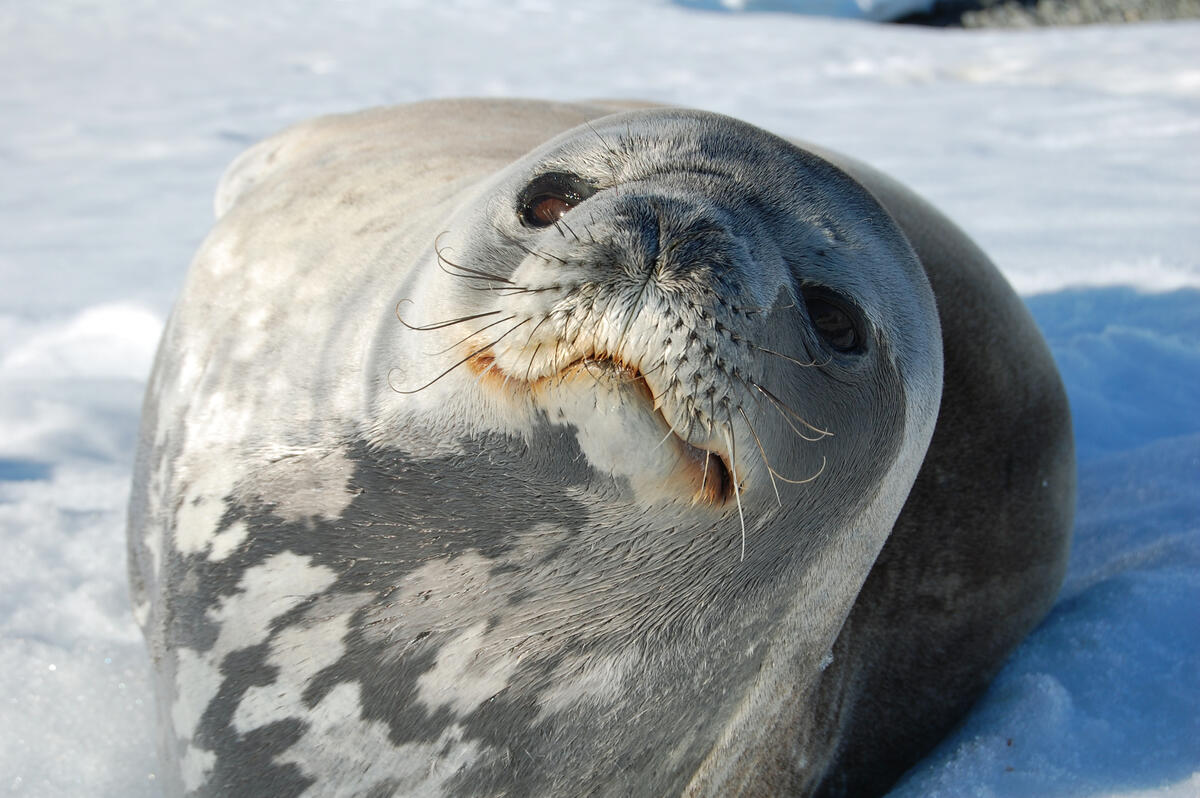
By our standards at this point, we would describe this place as idyllic.
